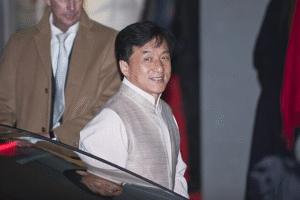The much sought-after Indian talent is presently getting drawn in towards Canada in enormous numbers, away from the United States due to its obsolete H-1B visa strategy, immigration and strategy experts have told U.S. legislators.
This is a result of the per-country quota on issuing the employment-based green card or permanent residency, the experts said on Tuesday, asking Congress to move quickly to keep the Indian talent from moving to Canada from the United States.
Without Congressional action, the absolute accumulation for every one of the three employment-based classes for Indians would increment from an expected 9,15,497 people right now to an expected 21,95,795 people by monetary 2030, chief overseer of National Foundation for American Policy Stuart Anderson said.
“We should let that number hit home: Within 10 years, multiple million individuals will be sitting tight in line for quite a long time or even a very long time for employment-based green cards,” he submitted in his testimony before the House Judiciary Committee-Subcommittee on Immigration and Citizenship.
Affirming before the board on “Gracious, Canada! How Outdated U.S. Immigration Policies Push Top Talent to Other Countries,” Mr. Anderson said that exceptionally gifted unfamiliar nationals, including international understudies, are picking Canada over America.
“This has occurred in response to the fact that it is so hard to work in the United States in H-1B status or gain permanent home, and the similar simplicity of international understudies and unfamiliar nationals working in brief status and afterward procuring permanent home in Canada,” he said.
The number of international understudies from India selected alumni level software engineering and designing at U.S. colleges declined by over 25% between 2016-17 and 2018-19 scholarly years, as indicated by an examination of U.S. government information by the National Foundation for American Policy (NFAP).
To put the meaning of the decrease in context, international understudies address roughly 75% of the full-time graduate understudies at U.S. colleges in software engineering, and in the 2016-17 scholastic year, 66% of the international understudies at the alumni level in software engineering at U.S. colleges were from India.
Simultaneously less Indian understudies were coming to America, the number of Indian understudies going to Canadian colleges rose from 76,075 out of 2016 to 1,72,625 out of 2018, an increment of 127%, as per the Canadian Bureau for International Education, he said.
“In whole, Canada’s immigration approaches are superior to America’s for working with the section of talented people. Congress set up America’s arrangements in 1990, preceding smartphones, web-based business, web-based media, distributed computing and the day-by-day utilization of the web detonated the interest for high-talented specialized work. The world has changed since 1990. U.S. immigration strategy has not,” Mr. Anderson said.
The Canadian government has made it progressively simple for bosses to draw in and hold talent. On the other hand, mathematical restrictions on high-talented impermanent visas block by far most of unfamiliar conceived candidates from working in America in a given year, Mr. Anderson said.
In March 2021, bosses documented 3,08,613 H-1B registrations for cap selection for FY 2022 for only 85,000 H-1B petitions. “That implies more than 72% of H-1B registrations for high-gifted far-off nationals were dismissed even before an adjudicator assessed the application,” he said.
Jennifer Young, CEO, Technology Councils of North America, said that quickly developing Canadian organizations are permitted to recruit profoundly gifted unfamiliar talent, or individuals with ranges of abilities most commonly found among H-1B candidates in the United States, in just a month, pre-pandemic. By comparison, the United States immigration framework is paper-based, causing practically all candidates huge postponements in handling, she said.
Sudip Parikh, CEO and Executive Publisher, Science Journals, American Association for the Advancement of Science, told legislators that it is important that U.S. immigration strategies mirror a 21st-century approach similarly that the Congress is presently chipping away at legislation to propel exploration and innovation in basic advances to rival China.
“A few organizations have prescribed proposition to ‘staple a green card’ to international understudies graduating with a recognition in explicit, designated fields of study to meet U.S. requests,” he said, asking the Congress to continue to absolve advanced education and examination institutions from the H-1B visa covers.












